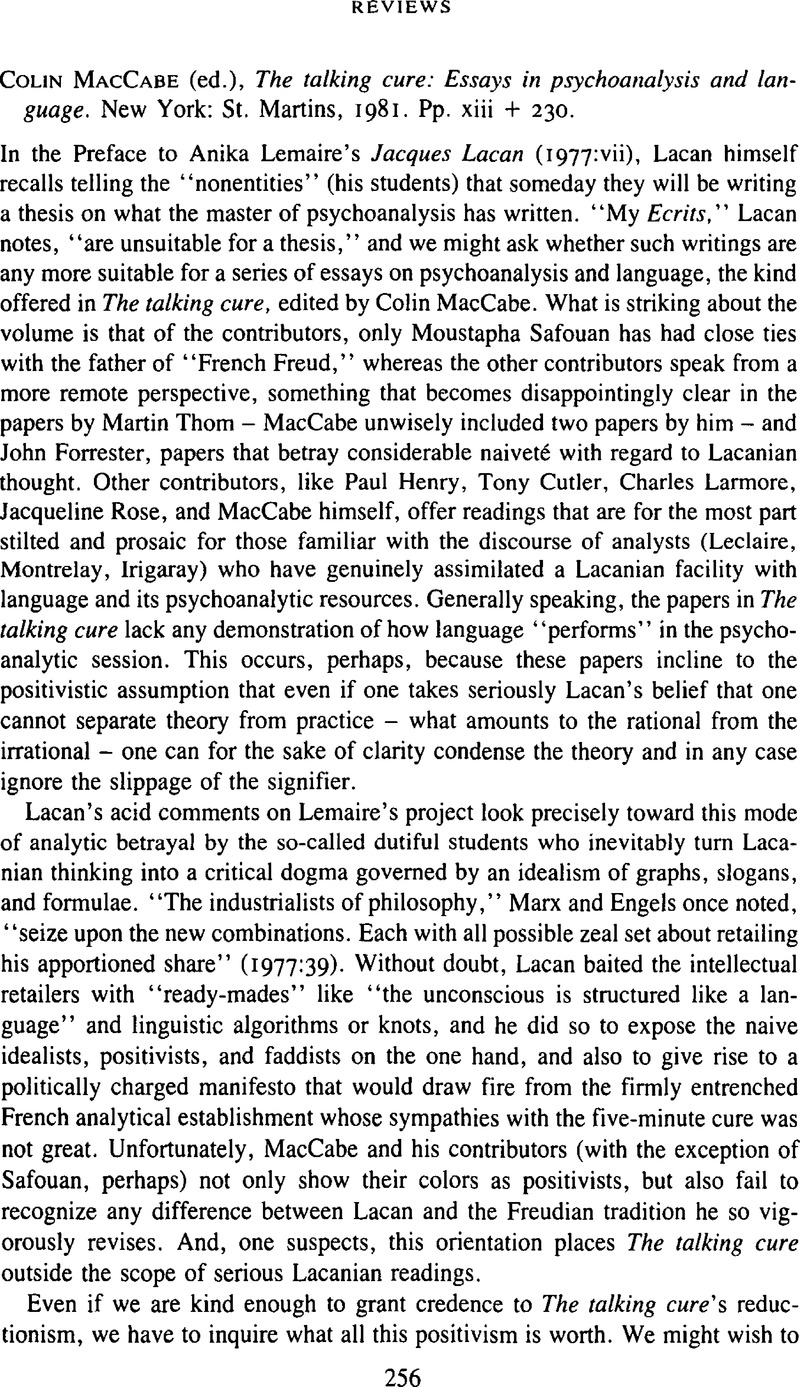No CrossRef data available.
Article contents
Colin MacCabe (ed.), The talking cure: Essays in psychoanalysis and language. New York: St. Martins, 1981. Pp. xiii + 230.
Published online by Cambridge University Press: 18 December 2008
Abstract
An abstract is not available for this content so a preview has been provided. Please use the Get access link above for information on how to access this content.

- Type
- Book Review
- Information
- Copyright
- Copyright © Cambridge University Press 1983
References
REFERENCES
Castoriadis-Aulagnier, P. (1975). La violence de l'interpretation: Du pictorgramme à l'énoncé. Paris: Presses Universitaires de France.Google Scholar
Freud, S. (1914). On narcissism: An introduction. In Standard edition, vol. 14. London: Hogarth.Google Scholar
Freud, S. (1920). Beyond the pleasure principle. Monograph. Leipzig, Vienna, Zurich: International Psychoanalytischer Verlag. Also in Standard edition, vol. 18. London: Hogarth.Google Scholar
Freud, S. (1921). Group psychology and the analysis of the ego. Monograph. Leipzig, Vienna, Zurich: International Psychoanalytischer Verlag. Also in Standard edition, vol. 18. London: Hogarth.Google Scholar
Gallop, J. (1982). The daughter's seduction: Feminism and psychoanalysis. New York: Cornell.Google Scholar
Kerrigan, W. (1980). The articulation of the ego in the English Renaissance. In Smith, J. H. (ed), Psychiatry and the humanities. Vol. IV: The literary Freud: Mechanisms of defense and the poetic will. New Haven: Yale University Press.Google Scholar
Muller, J., & Richardson, W. J. (1982). Lacan and language: A reader's guide to Ecrits. New York: International Universities Press.Google Scholar
Pecheux, M. (1981). Stating the obvious: Language, semantics, and ideology. New York: St. Martin's.Google Scholar
Wilden, A. (1968). The language of the self. Baltimore: Johns Hopkins University Press.Google Scholar




